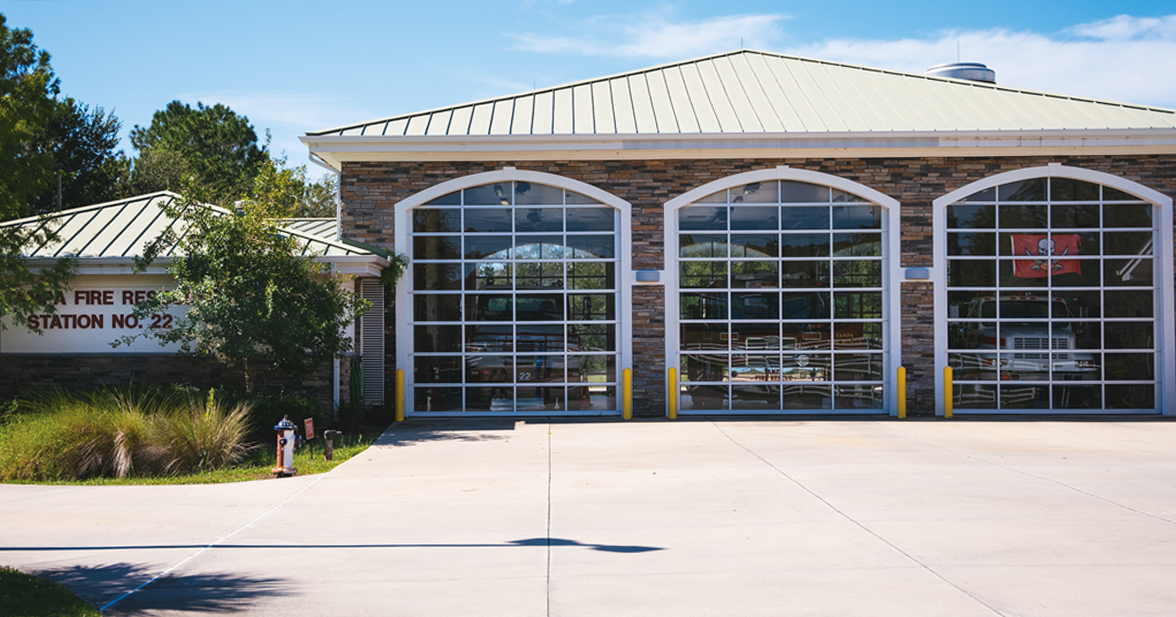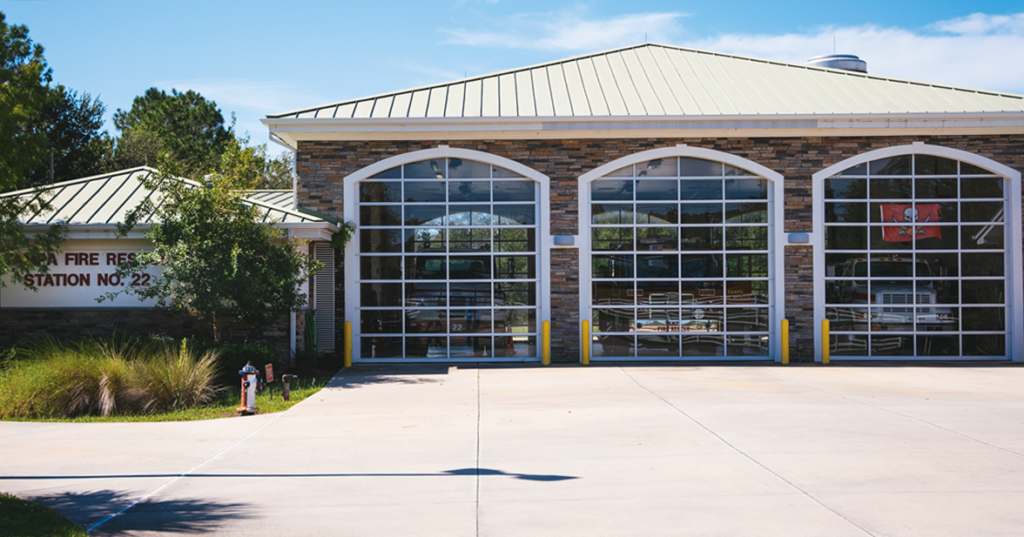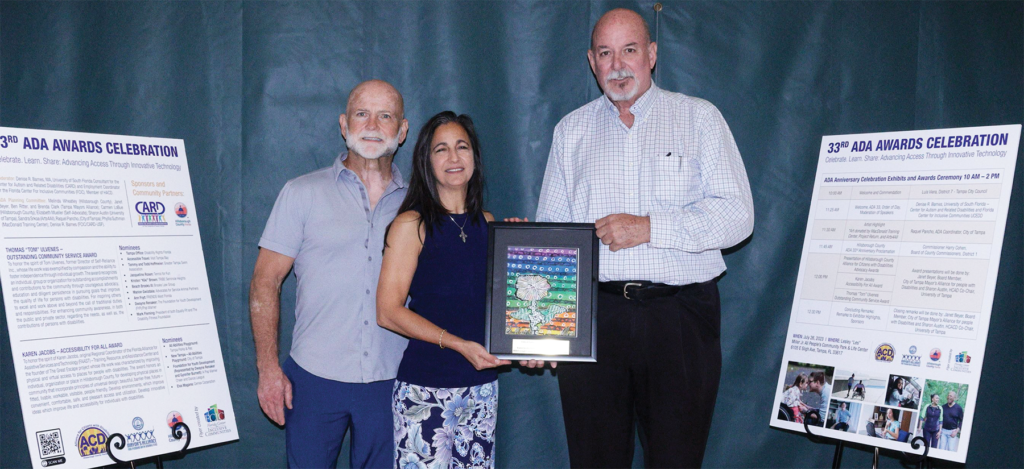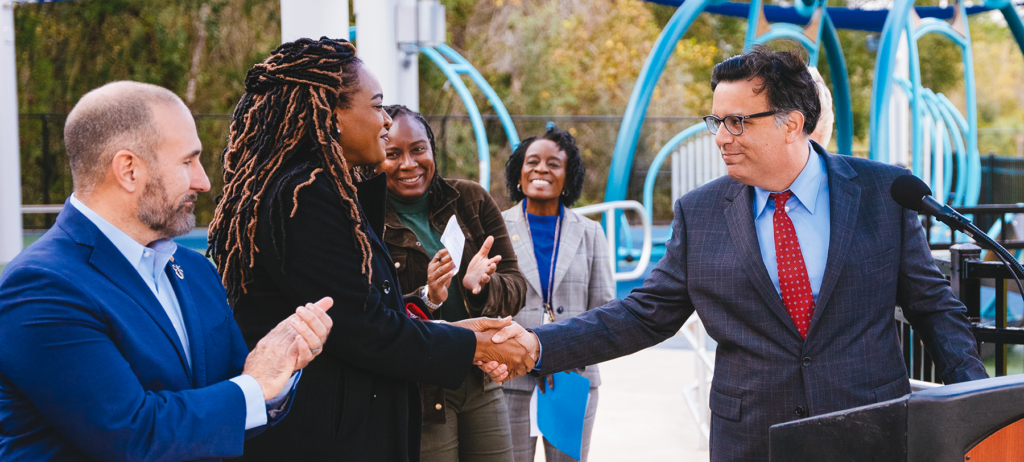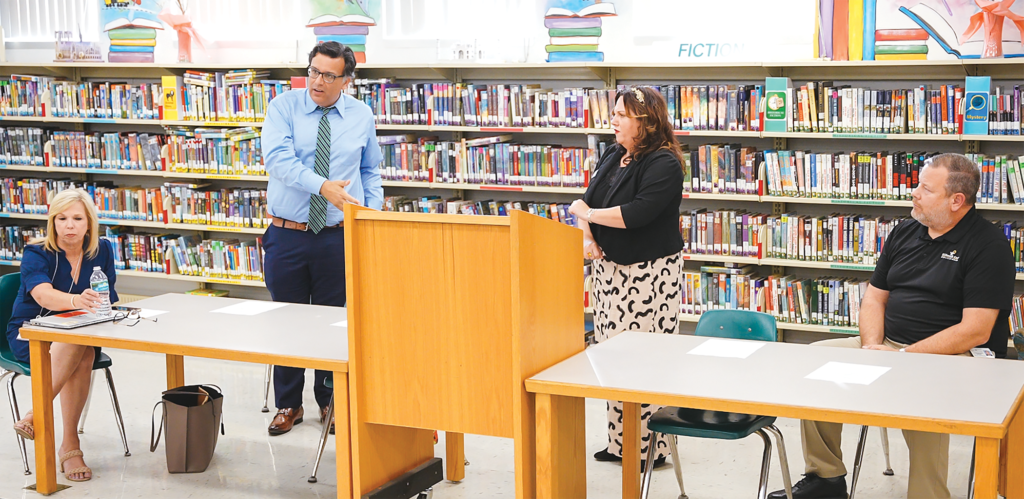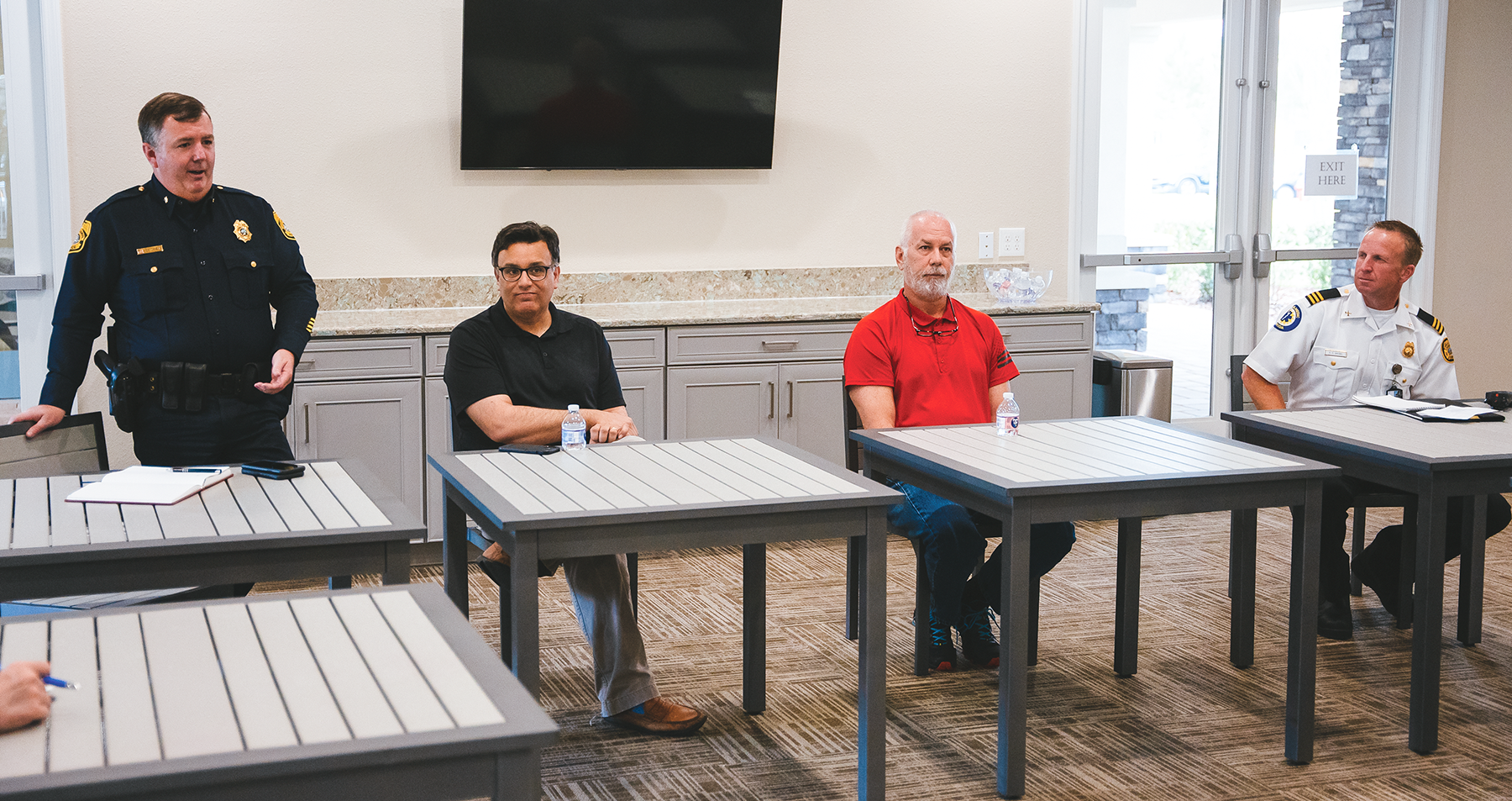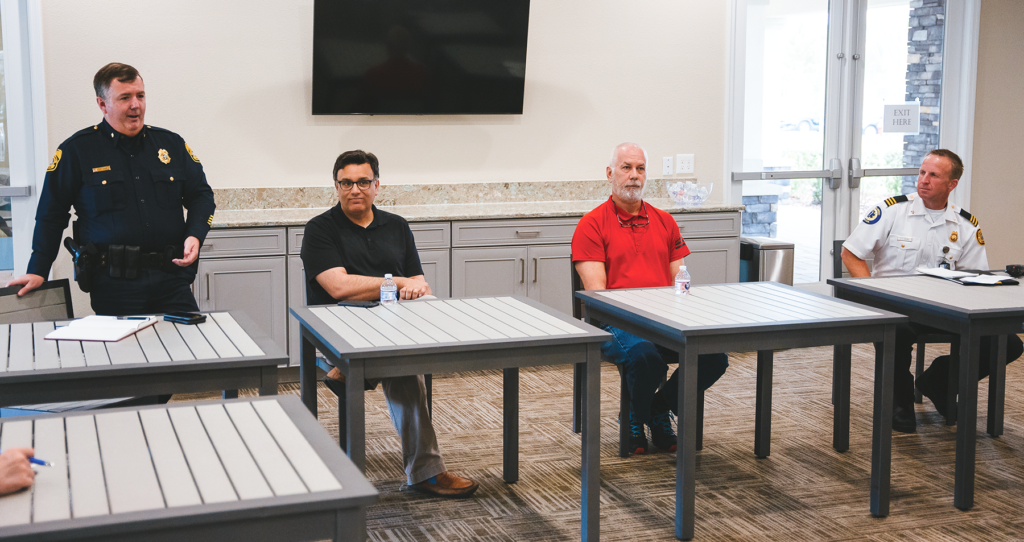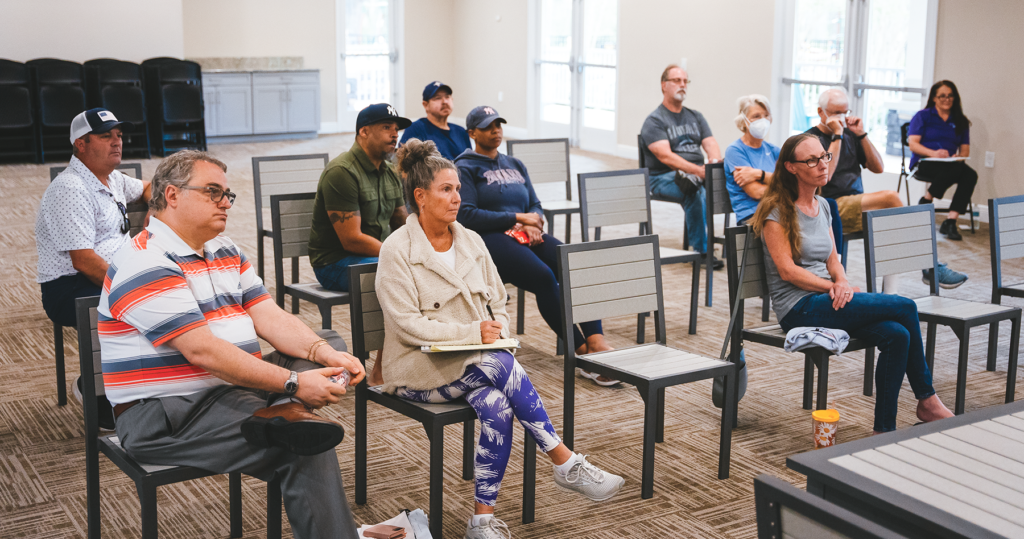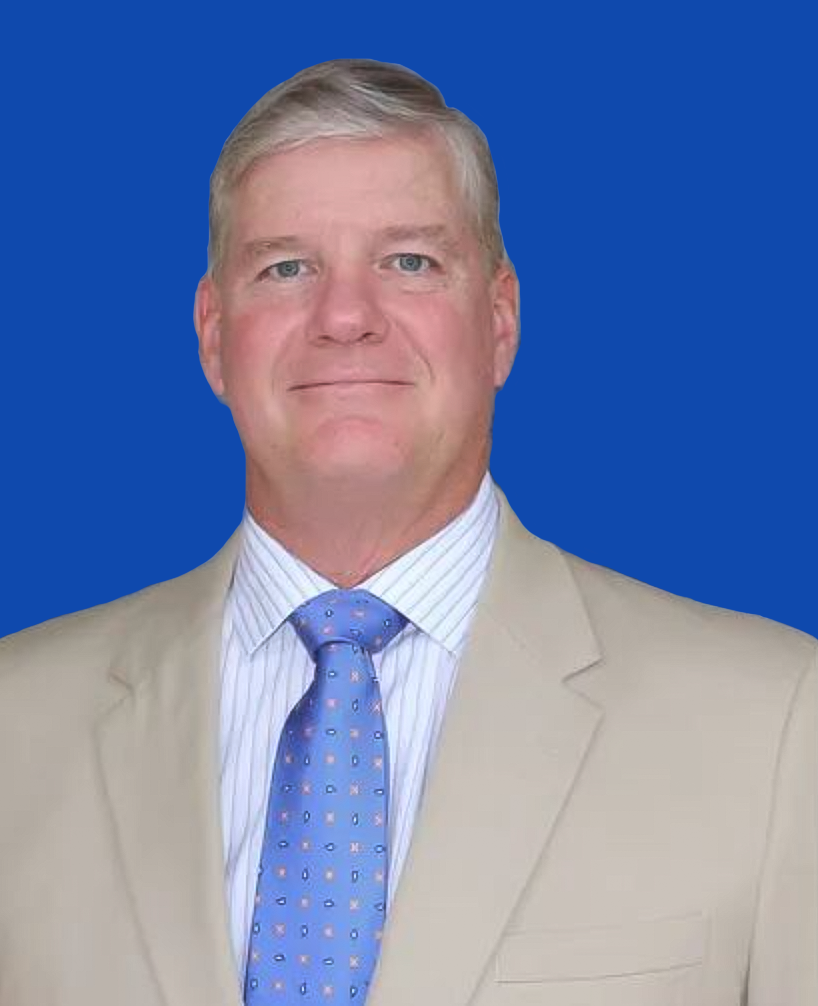
Even though he’s previously run for three local offices and been involved in multiple citizen’s groups advocating on behalf of New Tampa, you still may or may not know long-time Hunter’s Green resident Dr. Jim Davison.
Davison, the recently retired emergency room physician whose first run was more than 20 years ago — in the 2002 Republican primary for the District 2 seat on the Hillsborough Board of County Commissioners (BOCC) held by current Commission chair (and Dist. 2 Commissioner) Ken Hagan — is now a candidate for the countywide (also known as “at large)” District 6 County Commission seat, a race that will be decided on Tuesday, November 5, 2024, the same day as the nationwide General Election for U.S. President.
But, there is a lot for the New Tampa resident to accomplish between now and then in order to make it onto that General Election ballot for the seat currently occupied by Comm. Pat Kemp, who can not run for the seat again, due to term limits.
For one thing, he will have to defeat South Tampa resident and U.S. Air Force Reserve staff sergeant Rico Smith (who is the lead field engineer for StemRad, an Israeli-American start-up company that develops and manufactures personal protective equipment against ionizing radiation) in the primary election that will be held on Tuesday, August 20.
As of the date of this story, there also are three Democratic candidates who also will face a closed primary in August, with the winner facing the winner of the Republican primary between Davison and Smith — although other candidates could still qualify to run in either primary between now and July 2024.
The Democratic candidates for Dist. 6 include former countywide Dist. 5 Commissioner Mariella Smith (who served from 2018-22); former citywide Dist. 1 Tampa City Council candidate Sonja Brookins (who lost a runoff against current Dist. 1 commissioner Alan Clendenin earlier this year); and former countywide Dist. 7 candidate Mark Nash.
Although Dr. Davison also lost the 2004 Republican primary for the at-large Dist. 7 County Commission seat won by former Commissioner Mark Sharpe, as well as the 2016 run-off election for New Tampa’s Dist. 7 Tampa City Council seat won (by 65 votes) by Councilman (and fellow New Tampa resident) Luis Viera, he says that he believes his fourth run for public office will prove to be the charm.
“I feel I can win the primary and the general election because I am now able to campaign 24/7 since retiring from medicine,” Davison says. “With my involvement in local politics and multiple county issues, like the (failed) sales tax, I feel that I can project what a majority of the electorate are feeling. I also will have and have committed greater resources to this (election).”
Davison promises that he is a true fiscal conservative who will have New Tampa’s back if he is elected.
“Back in 2002, New Tampa was struggling under rapid growth, just like many other areas of the county are struggling today,” he says. “County government was growing by leaps and bounds. I had seen politicians wrapping themselves in conservative ideals and patriotic symbols, only to see them forget those principles after being elected. New Tampa needed solutions then and it needs them now.”
He says that he also will be the candidate who will work hard to make good on his promises if he is elected. A big part of that, he says, is restoring the public’s trust in their local elected officials.
“Although there has always been a degree of mistrust between government and the people, it has reached new heights,” Davison says. “Covid and the recent sales tax issue are only the latest examples of complete lying and misrepresentation on the part of the county. As a member of the Hillsborough Transportation Planning Organization’s Citizen’s Advisory Committee (TPO CAC), I know the county (currently) has no intention of changing course. I run to not only present valid solutions, but to try and repair people’s distrust of local government by telling the truth and meeting their concerns.”
As For New Tampa…
Although Davison says it will be his responsibility to represent the entire county on the Commission, he won’t forget about the issues that are important to New Tampa with regards to the county.
For example, “The East-West Road connecting New Tampa directly to I-275 north of Bearss Ave. is no longer on the county’s Long Range Transportation plan,” he says. “New Tampa may have missed the best opportunity in 20 years when the Tampa-Hillsborough Expressway Authority was going to build it and run express bus transit from New Tampa to downtown Tampa, starting about 2025. When the Florida Dept. of Transportation (FDOT) removed the express lanes from the I-275 improvements north of Hillsborough Ave to north of Bearss Ave., the Expressway Authority couldn’t justify dumping more traffic onto a failed roadway. However, the possibility of an East-West Connector for New Tampa still exists. In addition, we need to look at what is going to happen with Morris Bridge Rd., County Line Road and road, bridge and sidewalk maintenance (see story on pg. 10) in the New Tampa area. We also need to look at local transit circulators and bus rapid transit to USF and beyond.”
He also believes that even though most of the communities in New Tampa are located within the city limits of the City of Tampa, the County Commission still has a lot of say about the future of our area.
“Bruce B. Downs (BBD) Blvd. is a county road, as is Morris Bridge Rd.,” he says. “New recreation areas and sports fields will be needed in New Tampa. Maintaining all county property in good repair is another. The property north of Cross Creek Blvd to the county line, and between Kinnan St. and BBD, is all unincorporated Hillsborough County. Keeping the residents of that area safe has to be the number one priority and the responsibility of the Board of County Commissioners.”
Davison says he also has been watching the situation with the Pebble Creek golf course closely and believes, “The Pebble Creek Golf Course situation never should have gone this far. The county has the money to purchase the property, using small amounts from several revenue streams. Both recreational trails, much needed sports fields for a whole host of sports from baseball and cricket to soccer and lacrosse could be built and the whole area constructed to facilitate a wildlife corridor. All of these are sorely needed in New Tampa. This is just good fair policy and would have great economic benefits. With the growth exploding north of us in Pasco, more homes and/or apartments and their traffic are not what we need here. If the county would purchase the site, everyone would come out a winner, including the present golf course owner.”
Dr. Davison, who has been married to his wife Diane for 43 years, has lived in New Tampa since 1993. They raised their four children and were deeply involved in their schooling and sports activities. For most of the last 30 years, Davison worked as an Emergency Room Physician at multiple local hospitals and was the medical director of South Bay Hospital in Sun City Center, as well as the volunteer director of the Sun City Center Rescue Squad. The last four years he has worked as a staff physician at Med Express urgent care centers.
He was appointed by the BOCC to the county’s Emergency Medical Planning Council and Indigent Healthcare Board and has served on multiple city and county boards and committees. He was appointed by Tampa City Council to the Transportation “Committee of 99,” and to the county’s Citizens Advisory Committee and Trauma Auditing Committee. He also is proud to have to lobbied city and county government for infrastructure improvements in New Tampa. From transportation, to recreation centers and ball fields in New Tampa, Dr. Davison’s voice was a constant at city and county meetings.
He says he has spoken with all of the Republicans county commissioners elected in 2022 and they have all been encouraging.
“There is much to do,” he says.


